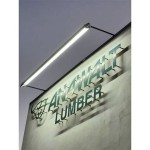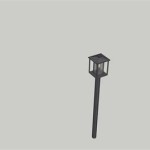How to Run Power to an Outdoor Gazebo
Outdoor gazebos provide a delightful retreat for relaxation, entertaining guests, or simply enjoying the fresh air. However, adding power to a gazebo can enhance its functionality, making it a more versatile space. Running power to an outdoor gazebo involves careful planning and execution to ensure safety and efficiency. This article will guide you through the essential steps involved in this process.
1. Determine the Power Requirements
Before starting any electrical work, it is crucial to assess the power requirements of your gazebo. Consider the appliances and devices you plan to use within the gazebo, such as lighting, fans, heaters, or even a small refrigerator. Determine the total wattage needed and choose a circuit breaker and wiring that can handle the load comfortably.
Factors to consider when determining power requirements include:
- Number and type of electrical devices
- Wattage rating of each device
- Frequency of use
- Estimated peak load
Consulting with a licensed electrician is always recommended to ensure accurate power calculations and code compliance.
2. Select the Appropriate Wiring and Circuit Breaker
Once you have determined the power requirements, it is essential to select the appropriate wiring and circuit breaker. The size of the wiring and the amperage of the circuit breaker must be adequate to handle the load without overheating or creating a fire hazard. The most common gauge of wire used for outdoor applications is 12-gauge, which is suitable for most residential installations.
The following table provides a general guideline for selecting the appropriate circuit breaker and wiring based on the total wattage:
| Total Wattage | Circuit Breaker (Amps) | Wire Gauge | |---|---|---| | Up to 1,500 watts | 15 Amps | 12-gauge | | 1,501-2,400 watts | 20 Amps | 12-gauge | | 2,401-3,600 watts | 30 Amps | 10-gauge | | 3,601-4,800 watts | 40 Amps | 8-gauge |Always refer to local electrical codes and consult with a qualified electrician to ensure the correct wiring and circuit breaker are selected for your specific application.
3. Plan the Wiring Route and Installation
The wiring route for your gazebo should be carefully planned to ensure safety, aesthetics, and ease of installation. It is generally recommended to run the wiring underground or concealed within the gazebo structure. If running wiring underground, it is essential to use direct burial cable rated for outdoor use and to bury it deep enough to prevent damage from digging or lawn maintenance.
Choose a suitable location for the electrical outlet or junction box within the gazebo. Consider convenience, visibility, and proximity to the power source. If running wiring through the walls or roof of the gazebo, use appropriately sized conduit or cable trays to protect the wiring and ensure proper ventilation.
4. Install the Electrical Outlet and Ground Fault Circuit Interrupter (GFCI)
The electrical outlet installed in your gazebo should be a weatherproof, tamper-resistant type. This outlet will provide the necessary power connection for the appliances and devices you plan to use. It is also essential to install a Ground Fault Circuit Interrupter (GFCI) for increased safety, especially in outdoor areas.
GFCIs are designed to interrupt the flow of electricity in case of a ground fault, which can occur if a live wire comes into contact with water or a grounded object. GFCIs are typically installed in the junction box or on the circuit breaker panel. Consult with a licensed electrician for proper installation and testing of the GFCI.
5. Connect the Wiring and Inspect the Installation
After the wiring route is established and the outlet and GFCI are installed, connect the wiring according to the electrical code and manufacturer's instructions. Ensure all connections are secure and properly insulated. It is crucial to follow all safety precautions and to disconnect the power source before making any wiring connections.
Once the wiring is complete, thoroughly inspect the installation to ensure that all connections are secure, the conduit or cable trays are properly installed, and there are no exposed wires or damaged insulation. It is highly recommended to have a licensed electrician inspect the installation to ensure compliance with electrical codes and safety standards.
6. Test the Power and Protect the Wiring
After the installation is complete, test the electrical outlet to ensure that it is functioning correctly. Use a voltage tester to confirm that power is flowing to the outlet and that the GFCI is working properly. If you have any doubts about the installation or if you experience any problems, contact a licensed electrician immediately.
To protect the wiring and ensure its longevity, consider adding protective covers or sleeves to the wires, especially in areas where they might be exposed to weather or foot traffic. Additionally, maintain regular inspections of the wiring and replace any damaged or frayed wires promptly.

Installing Electricity For A Backyard Pavilion

Diy Adding Power To A Outdoor Structure Pergola Gazebo Etc Part 2

This Backyard Gazebo Can Power Your House With Solar Electrek

Diy Adding Power To A Outdoor Structure Pergola Gazebo Etc Part 1

Solar Power Gazebo Firefly

You Can Build This Gazebo Yardistry

Diy Adding Power To An Outdoor Structure Pergola Gazebo Etc Part 3

Yardistry 12x14 Gazebo Installation Tips The Palette Muse

How To Put Up A Gazebo In Your Backyard Thrift Diving

Solar Power Gazebo Firefly







